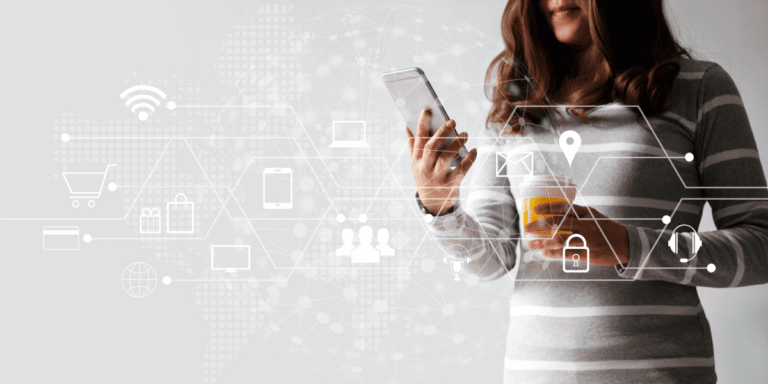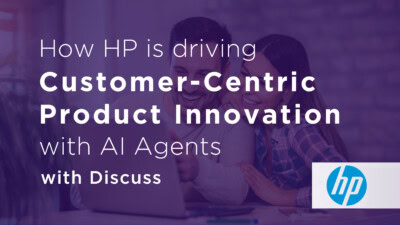Enhance Customer Interactions Using Cutting-Edge Customer Experience Software

CX software, bursting with various tools and bolstered by careful market research, marks the hallmark for enhancing customer interactions. It meshes AI and automation – a dream team – to smooth out processes, efficiently trimming operational expenses. This digital solution creates a unified platform to weave seamless customer experiences that are as unique as a fingerprint.
Armed with robust reporting and analytics capabilities, it unearths valuable insights about your key performance indicators (KPIs). Embedded in its analytical functions, one can find its marketing expertise and decoding strategies that resonate best with customers. This marriage of technology and customer service is the key that opens doors to improved customer relationships.
Enhancing customer interaction with experienced software involves leveraging advanced features such as omnichannel support, self-service options, AI and automation for streamlining processes, and robust reporting and analytics capabilities. Utilizing research findings to enhance these tools, businesses can better manage and prioritize customer interactions throughout the entire customer journey, leading to improved satisfaction and retention as well as informed marketing strategies.
Digital Solutions for Enhanced Customer Interaction
In today’s digital age, customer experience (CX) software has become an indispensable tool for businesses looking to elevate their customer interaction game. This software is a powerhouse of features designed to streamline and humanize the customer experience, grounded in both cutting-edge research and practical marketing applications. With its omnichannel support, businesses can seamlessly communicate with customers across various touchpoints, such as email, social media, and live chat.
It’s not just about answering questions or solving problems—it’s about predicting and preventing them before they even happen. Advanced routing capabilities ensure that each customer is efficiently connected to the right person who can address their specific needs, leading to faster resolution times and increased satisfaction. Innovative technology combined with successful marketing practices enables a smoother communication avenue between customer and support agent.
Diving into the world of top-notch customer experience software reveals a vast array of features that can transform how businesses engage with their customers and manage their customer expectations effectively.
Customer experience (CX) software is designed to help businesses track, manage, and prioritize customer interactions throughout the entire customer journey. An essential feature of the top CX software is omnichannel support. This means that the software integrates various communication channels such as email, chat, social media, and phone calls, providing a seamless experience for both customers and representatives. Achieving consistent and cohesive conversations with customers, regardless of their preferred channel, is a significant part of managing customer expectations effectively.
Self-service Options
Self-service options are another key component of CX software. These tools, backed by rigorous research and marketing tactics, empower customers to find answers to their queries or resolve issues on their own, reducing the need for direct support interactions while still providing a positive experience.
Furthermore, CX software comes with robust reporting and analytics capabilities based on customer insights and Key Performance Indicators (KPIs). With the precision of excellent research methods and strategic marketing approaches, businesses can gain valuable insights into customer behavior, preferences, and pain points.
AI Integration
The integration of AI and automation technologies within CX software is truly revolutionary. It incorporates crucial research findings and marketing acumen, enabling superior streamlining of processes and a reduction in operational costs.
Some might worry that AI and automation could replace human touch and empathy in customer interactions. However, the reality is quite the contrary—the integration of such technologies, guided by thorough research and innovative marketing strategies, allows businesses to deliver more personalized experiences. Not just limited to streamlining operations, CX software creates a unified workspace that fosters a seamless customer relationship management ecosystem. This workspace encourages collaboration between various teams within an organization, ultimately leading to delivering unparalleled and personalized experiences that exceed customer expectations.
Key Features of Top Customer Experience Software
Advanced customer relationship management features, like routing, is another crucial aspect of leading customer experience software. This feature ensures that customer queries are directed to the most appropriate representative or team, enhancing efficiency and overall customer satisfaction.
Nowadays, customers prefer finding answers on their own without having to wait for support. This is where self-service options, such as knowledge bases, FAQ sections, and interactive chatbots, come into play. These tools empower customers by meeting their expectations of instant solutions and relieving the strain on customer support teams.
Seamless integrations with other tools and systems, such as customer relationship management (CRM) platforms, are vital for ensuring smooth operations across different departments within an organization. Integrated CX software allows businesses to aggregate data from various touchpoints, providing a holistic view of each customer’s journey and enabling more personalized interactions.
Reporting and analytics capabilities based on customer insights and key performance indicators (KPIs) are indispensable in gaining actionable insights from customer behavior. Through robust reporting and analytics tools, businesses can identify trends, gauge the effectiveness of their strategies, and make data-driven decisions to continually improve the customer experience and meet customer expectations.
Imagine a world where every time you had a question or needed assistance, you were met with silence. Undoubtedly frustrating, right? Well, for businesses, that silence could directly impact their bottom line. This is where customer interaction software coupled with effective customer relationship management comes in, and its role is undeniably crucial. It not only streamlines customer engagement but also provides the platform to effectively resolve issues and personalize interactions.
Importance and Impact of Interaction Software
Let’s break this down: when customers feel heard and valued, they’re more likely to stay loyal and spend more money. An effective customer relationship management strategy can help in achieving this by ensuring all interactions meet or exceed customer expectations.
Studies show that after implementing customer experience software, including advanced customer experience tools, businesses have seen an average increase in customer engagement of 30%, which translates directly to improvements in customer satisfaction scores by an average of 25%. This enhanced strategy has been proven to outperform competitors by boosting customer retention rates, which have been known to increase by around 20% for businesses using top-notch customer interaction software.
The ability to offer omnichannel support is particularly significant in today’s world, where customers expect seamless experiences across different channels such as email, chat, social media, and phone calls. Effective use of omnichannel support with these customer experience tools can lead to a significant reduction in customer support tickets by as much as 35%. The convenience provided by advanced routing and self-service options further enrich these interactions, showing customers that their time and convenience are valued, keeping your business ahead of competitors.
With advanced routing and self-service options at the helm of modern customer interaction software, businesses can deliver a level of service that not only resolves issues effectively but also makes the customer feel truly heard and understood. But how do they know if they’re hitting the mark? This is where the reporting and analytics capabilities of these customer experience tools come into play.
In the pursuit of effective customer engagement strategies, understanding how to derive actionable insights from reporting and analytics becomes paramount. By harnessing the power of data-driven decision-making with these tools, businesses can elevate their approach to building lasting relationships with their customers.
Strategies for Effective Customer Engagement
By leveraging customer experience tools and the data and insights gathered about your customers, you can surprise and delight them by offering tailored experiences. Perhaps they’ve been eyeing a particular product – a gentle nudge in their email inbox or a personalized offer could turn that interest into a purchase.
A seamless omnichannel experience ensures that no matter where a customer interacts with your business—whether it’s on social media, through email, or in person—the experience feels consistent and easy. Customer experience tools are integral to delivering this seamless experience, setting your business apart from competitors.
One way to enhance these customer journeys is through proactive issue resolution, which means identifying and addressing customer issues before they even have a chance to reach out to you. This can be achieved through advanced routing and AI-driven automation, which play a significant role in shaping personalized customer journeys.
With the use of advanced routing features in your CX software, incoming customer issues get assigned to the right team or person automatically. This way, customers get timely and accurate responses in line with their unique journey without having to wait too long for help.
Implementing these strategies effectively can significantly boost customer engagement and satisfaction levels by providing personalized experiences within their customer journeys, maintaining consistency across multiple channels, and resolving issues proactively.
Measuring Performance and Satisfaction with CX Software
When it comes to customer experience, perception is reality, especially in the digital age, where every interaction can be tracked and measured. Utilizing reporting and analytics features within your CX software is essential for understanding the real impact of your customer engagement strategies.
By tracking key metrics such as customer satisfaction scores, Net Promoter Score (NPS), customer retention rates, and customer lifetime value (CLV), businesses can gain crucial insights into how their customers feel about their brand and the effectiveness of their customer experience efforts.
Let’s break down these key metrics:
Customer Satisfaction Scores:
This important metric allows businesses to gauge how happy and satisfied their customers are with the products or services they receive. It’s typically measured through direct feedback mechanisms such as surveys, which provide valuable insights into areas that require improvement.
Net Promoter Score (NPS):
NPS measures how likely customers are to recommend the company to others. Customers are divided into Promoters (those who would recommend), Passives (those who are neutral), and Detractors (those who would not recommend). This score provides a strong indicator of customer loyalty and can predict the churn rates.
Customer Retention Rates:
This metric highlights the percentage of customers that continue to do business with a company over a given period. It’s an essential metric for measuring loyalty and the effectiveness of customer engagement strategies.
Customer Lifetime Value (CLV):
CLV represents the total amount of money a customer is expected to spend with a business during their entire relationship. Calculating CLV helps businesses understand the long-term value of each customer and tailor their engagement strategies accordingly.
By analyzing this data, companies can identify specific areas for improvement and optimize their customer engagement strategies accordingly.
Contact Discuss For Customer Experience Insights
Enabling reporting and analytics features within CX software provides businesses with a clear understanding of how their efforts are impacting customer interactions and overall business performance. Harnessing these insights can guide strategic decision-making and drive continuous improvement in customer engagement.
To delve deeper into how CX software can revolutionize your customer interactions and boost overall satisfaction, consider exploring our insights solutions at Discuss. Understanding these metrics can help you make informed decisions to enhance your brand’s image and ensure long-term success.
Ready to unlock human-centric market insights?
Related Articles

3 Ways to Combine Communities with Live Video Qualitative
There is no better combination than peanut butter and chocolate. Salty and sweet join to give you the best of…
There is no better combination than peanut butter and chocolate. Salty and sweet join to give you the best of…

How Our Marketers are Leveraging Discuss to Harness the Power of Customer Insights
“People don’t buy what you do; they buy why you do it.” ― Simon Sinek, Start with Why: How Great…
“People don’t buy what you do; they buy why you do it.” ― Simon Sinek, Start with Why: How Great…

What is Customer Perception?
In general marketing terms, customer perception refers to customers’ awareness, their impressions, and their opinions about a business and its…
In general marketing terms, customer perception refers to customers’ awareness, their impressions, and their opinions about a business and its…



